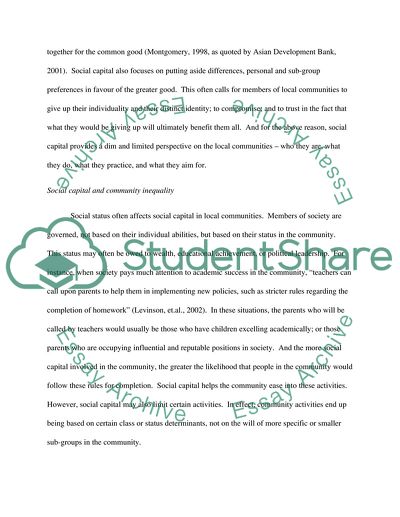Cite this document
(Why the Concept of Social Capital Provides a Limited Perspective on Research Paper, n.d.)
Why the Concept of Social Capital Provides a Limited Perspective on Research Paper. Retrieved from https://studentshare.org/sociology/1724769-explain-why-the-concept-of-social-capital-provides-a-limited-perspective-on-local-community-life
Why the Concept of Social Capital Provides a Limited Perspective on Research Paper. Retrieved from https://studentshare.org/sociology/1724769-explain-why-the-concept-of-social-capital-provides-a-limited-perspective-on-local-community-life
(Why the Concept of Social Capital Provides a Limited Perspective on Research Paper)
Why the Concept of Social Capital Provides a Limited Perspective on Research Paper. https://studentshare.org/sociology/1724769-explain-why-the-concept-of-social-capital-provides-a-limited-perspective-on-local-community-life.
Why the Concept of Social Capital Provides a Limited Perspective on Research Paper. https://studentshare.org/sociology/1724769-explain-why-the-concept-of-social-capital-provides-a-limited-perspective-on-local-community-life.
“Why the Concept of Social Capital Provides a Limited Perspective on Research Paper”, n.d. https://studentshare.org/sociology/1724769-explain-why-the-concept-of-social-capital-provides-a-limited-perspective-on-local-community-life.


